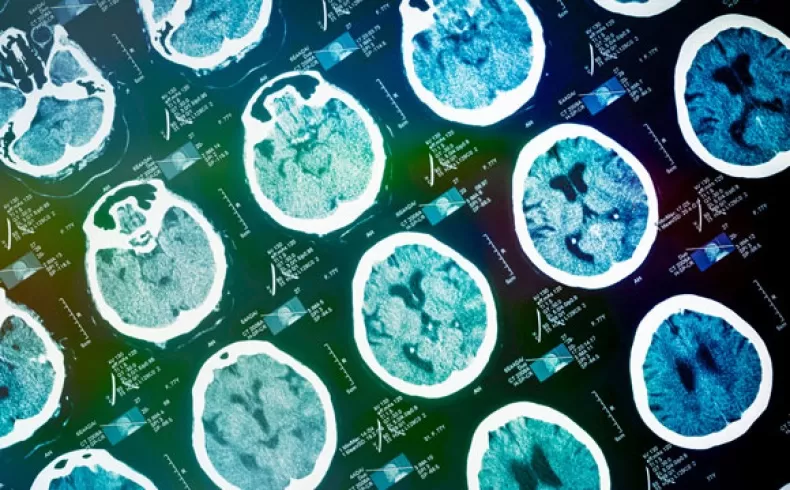Imagine this: You walk into your doctor’s office with a pain in your chest. After discussing your symptoms, your doctor inputs said information into a computer, which immediately provides the latest research on how she might diagnose and treat your problem. Based on the combination of her knowledge and experience, plus the information provided by the computer, she determines that you need a chest X-ray, and the computer again helps the radiologist detect discrepancies that may be too small to the naked eye. Finally, the computer pulls your personal medical records, family history and compares that with recent research to suggest a treatment protocol that’s tailored to your specific needs. Sounds like a scenario straight out of a futuristic movie with robots and flying cars, right? Believe it or not, that technology is in the NOW, and it’s called Machine Learning.
Are Radiologists Being Replaced By Computers?
In short, machine learning is a form of artificial intelligence (AI) that involves teaching a computer to perform a specific, known task. It basically gives computers the ability to learn without being explicitly programmed. The computer is given algorithms, which create models based on example inputs in order to derive data-driven predictions and decisions. Machine learning methods use statistical learning to identify boundaries. One method for making predictions is called a decision tree, which uses a series of if-then statements to identify boundaries and define patterns in the data. For example, if a patient’s X-ray shows a cortical disruption along with a fine line of increased density, then the patient has suffered a stress fracture. Decision trees look at one variable at a time, then split the data into two branches base on some value, which is then categorized accordingly. Meaning you can train the computer to help a radiologist identify the fracture. Pretty cool, right? It’s one of many ways ML will become part of the daily clinical diagnostic support routine.
Learn how "AI and Future of Radiology" will improve the workflow of radiology professionals both clinically and financially.
Supervised and Unsupervised Learning
There are two types of machine learning in terms of desired outcome: supervised and unsupervised:
- Supervised Learning. Similar to humans, machine learning algorithms can learn through providing an input and desired output. Think: chest x-rays (input) and diagnosis (output). This data is given to the computer by a supervisor, and the computer learns general rules that discriminate between potential diagnoses. To put it simply, the computer learns from what is known, like studying for a test! If a trainee studies diagnosis-proven cases, they’re more likely to identify a diagnosis on their own. The more they study, the better and their ability to identify an accurate diagnosis will be. But this doesn’t happen overnight. Similar to a radiologist in training that must go through years of study and residency, computers must be trained on thousands of cases before it can accurately diagnose a patient.
- Unsupervised Learning. When a computer experiences unsupervised learning, the inputs may be the same but no outputs are provided. The computer must figure out the possible diagnoses on its own, and how to discriminate amongst them. Instead of trying to learn from what is known, the computer must learn from what is unknown in the data. This is what leads to innovation and knowledge discovery. In comparison, supervised learning is quicker in terms of output and takes advantage of prior knowledge in radiologic diagnoses, but it’s very limited in identifying new patterns of disease.
What Does it All Mean for the Future of Radiology AI in Healthcare?
Machine learning is still fresh to radiology, but that will rapidly change with the increased ability of machine learning algorithms. Somewhere in the not so distant future, machine learning will play a large role in routine workflow and providing real-time diagnostic support to radiologists – especially in the detection and diagnosis of disease. With the movement towards value-based care, there’s a huge push for improved quality and greater efficiency, driving major change in the world of radiology.
Machine learning radiology technology will be able to reduce human error, identifying image information that may be indistinguishable to the human eye. There’s a lot of room for improvement, since radiologists are reading 20% more cases per day than they did 10 years ago and view twice as many images (RSNA) to meet the demand for imaging services. ML technology will enable radiologists to work more efficiently and produce better reports; taking on tasks that were once assumed to require human thinking, including interpreting image information.
Radiologist Nick Bryan, M.D., Ph.D., predicted in 2016 that in the next decade all medical imaging will be reviewed by a machine prior to being studied by a radiologist. While starting small within niche tasks and subspecialties, these programs will eventually grow to incorporate more broad forms of diagnostic imaging like detecting abnormalities and interpreting them against clinical and pathological information. Researchers at UCLA are using machine learning in the form of chatbots to provide answers to patients’ questions relating to interventional radiology treatment. Once widely available, this research could help reduce the time interventional radiologists spend on the phone and give more convenient access to evidence-based information needed to care for patients.
Will Radiologists Be Needed in the Future?
Innovation in machine learning is not meant to replace a human being, rather enable radiologists to detect medical conditions sooner. This could potentially allow for earlier intervention and better patient outcomes. At the end of the day, the human brain has extraordinary capabilities to work with data, assimilate information, conjure scenarios, and solve complex problems well beyond any artificial intelligence. However, we are only human, which means we WILL mess up. The future of humans in radiology looks bright. Machine learning technology can certainly reduce human error and analyze increasingly complex imaging examinations. Machine learning is really meant to complement the abilities of radiologists; working together to improve outcomes, transform radiology, and change the way we think about providing care.